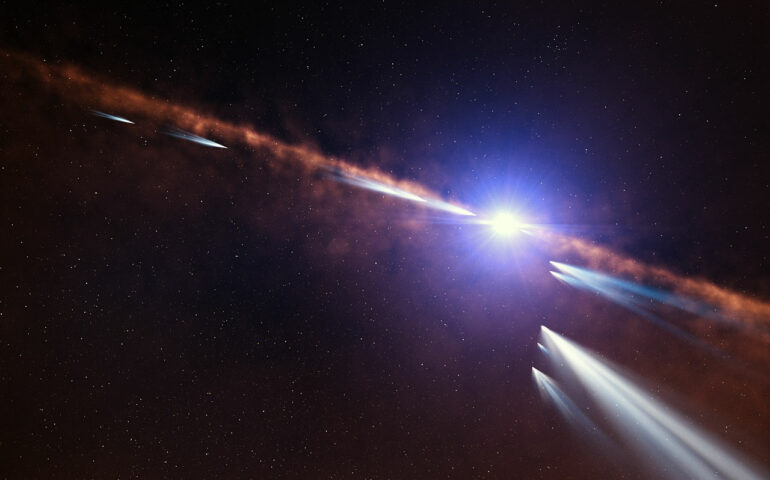For the past 30 years, the star β Pictoris has fascinated astronomers because it enables them to observe a planetary system in the process of formation. It is made up of at least two young planets, and also contains comets, which were detected as early as 1987. These were the first comets ever observed around a star other than the sun.
Now, an international research team headed by Alain Lecavelier des Etangs, CNRS researcher at the Institut d’Astrophysique de Paris (CNRS/Sorbonne Université), has discovered 30 such exocomets and determined the size of their nuclei, which vary between 3 and 14 kilometers in diameter. The scientists were also able to estimate the size distribution of the objects, i.e., the proportion of small comets to large ones. This is the first time this distribution has been measured outside our solar system, and it is strikingly similar to that of comets orbiting the sun. It shows that, just like the comets of the solar system, the exocomets of β Pictoris were shaped by a series of collisions and breakups. This work sheds new light on the origin and evolution of comets in planetary systems. Since a part of Earth’s water probably originated in comets, scientists are seeking to understand their impact on the characteristics of planets.
Their findings, published in Scientific Reports on April 28, 2022, are the outcome of 156 days of observation of the β Pictoris system using NASA’s Transiting Exoplanet Survey Satellite (TESS). Other upcoming observations, in particular with the Hubble and James Webb space telescopes, should enable scientists to find out more in the future.
More information:
Alain Lecavelier des Etangs et al, Exocomets size distribution in the β Pictoris planetary system, Scientific Reports (2022). DOI: 10.1038/s41598-022-09021-2
Citation:
Discovery of 30 exocomets in a young planetary system (2022, April 28)



